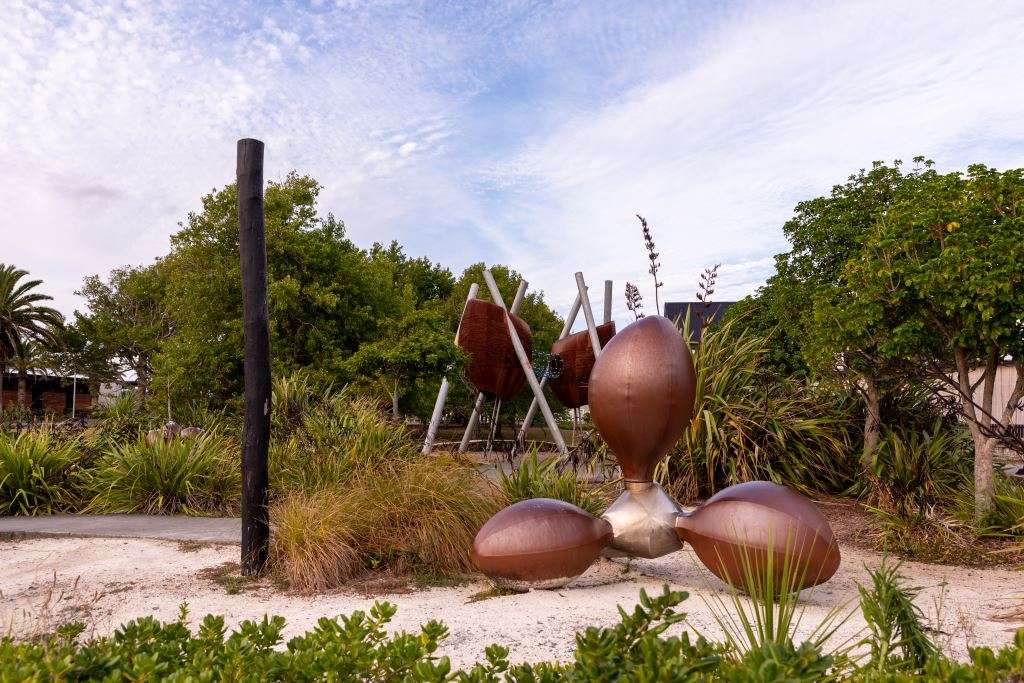A new report has outlined that prioritising cafes, parks, playgrounds, walkways and public artworks cements a strong sense of community in a master-planned neighbourhood.
Understanding the relationship between social amenity, wellbeing and land values, produced by Fresh Info for Kāinga Ora, surveyed more than 500 Hobsonville Point residents, builder and developer partners, and analysed residential land values.
The report found residents think highly of most amenities at Hobsonville Point, with the coastal walkway being a clear favourite – and children playing on scooters, neighbours buying produce at the farmers’ market and catching up for coffee with friends is an ingrained way of life there.
Katja Lietz, Kāinga Ora Deputy Chief Executive of Urban Development Planning, says people always want to live where there is a sense of community: “We knew if we could achieve that [in the beginning], then everything else would fall into place. I think there’s a really strong linkage between the physical environment and the strength of the community.
Start your property search
It’s not a causal link, ‘build it and there will be a strong community’, but you can certainly do things to help – creating parks and really strong streetscapes that give people the opportunity to have casual encounters, where you might stop and chat to your neighbour while you’re both walking the dog or walking the kids to school.”
Hobsonville Point has come a long way since its days as an airbase. Lietz says the airbase was out-of-bounds for most people, so it hadn’t been a place where anyone would think to live.
“There was a real need to establish it and a real incentive to put it on the map. But we were fortunate we had a board and a chief executive with a really strong vision around place-making and around community and [creating] a quality development. A lot of the decisions were made based on that really strong vision.”
That’s paid off, with the report confirming that early investment in social amenities has helped enhance Hobsonville Point residents’ wellbeing, created confidence amongst builder partners and is linked to a rise in residential land values – with the value shared between homeowners, builders and Kāinga Ora.

Hobsonville Point Park. Photo / Supplied
The greater investment in social amenity at Hobsonville Point relative to “baseline” amenity investment created a 10.8 per cent premium in residential land values, after adjustments for other factors that affect land values. Around 57 per cent of this value uplift was reflected in super-lot selling prices, with the remaining value shared by property developers and homeowners.
Lietz says it is pleasing the value is shared at Hobsonville Point: “It’s truly a win-win. We got a little bit more money from the land, the builders sold the homes quicker and probably for a little bit more than comparable developments, and the homeowners also get a lot of enjoyment from their investment, which will grow over time, so it feels really good.
“It doesn’t feel like a situation where someone has gained and someone has lost – everybody has done well out of this, which is really nice. I think it feels like a more 21st century approach to property development, that everybody needs to do well for a long-term project to be successful.”
For Lietz, the link between amenity and a sense of community is key. “It’s not just about it looking nice, it’s also about it actually functioning really well – that’s really important.”
She says Kāinga Ora understands, and has demonstrated, that providing social amenity is a pathway to creating thriving communities.
“We built a café before there was anyone here [at Hobsonville Point]. It worked tremendously well, because people come a very long way for a good playground and good coffee – it’s a really strong combination.”
The results achieved at Hobsonville Point will inform how Kāinga Ora approaches the master-planning process and provision of amenity in other large-scale developments.
“We understand that each neighbourhood we are working in has its own character, constraints and opportunities, and we’ll take all the relevant learnings from Hobsonville Point to set bespoke targets and measures on the benefits of social amenity across our developments,” Lietz says.
“The solutions will be different in every community, but the principles are the same – listening to what the community wants and what its aspirations are, and early amenity.”
- This content was supplied by Kāinga Ora








